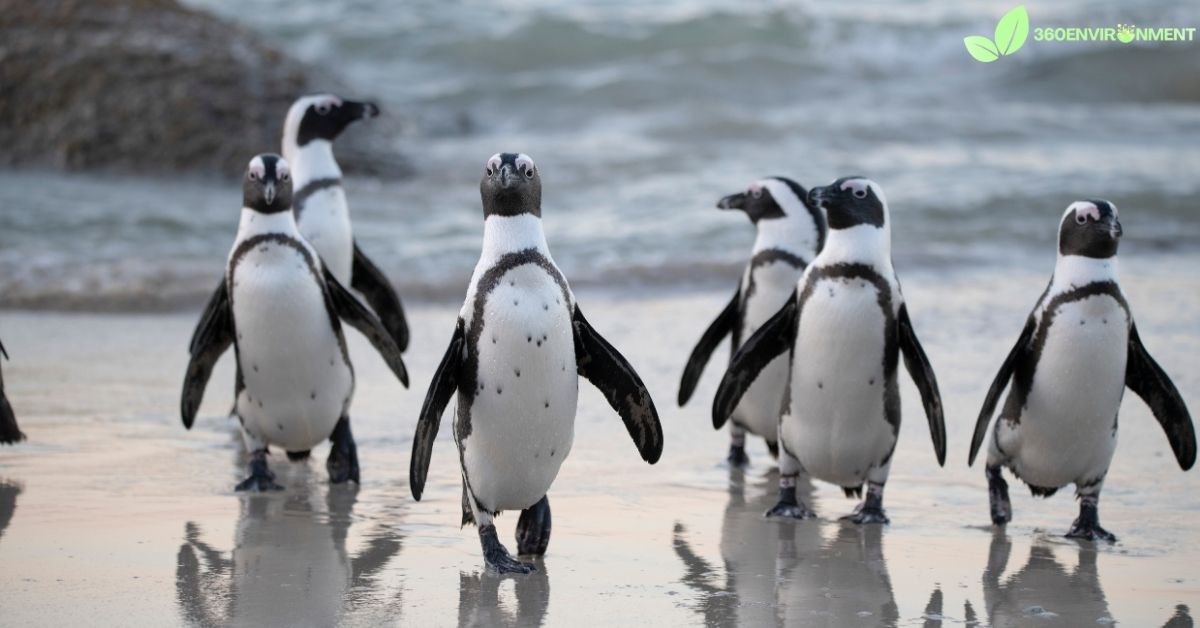Penguins are some of the most iconic and beloved birds in the world, often associated with icy landscapes and their distinctive black and white plumage. However, penguins are far more diverse than they may seem at first glance. The world of penguins is made up of several species, each with its own unique name, environmental niche, and role in maintaining the ecosystems they inhabit. From the Emperor Penguin of Antarctica to the Galápagos Penguin in the equatorial Pacific, these birds have adapted to a wide range of habitats, showcasing remarkable ecological diversity.
In this article, we will explore penguin names, their environmental niches, and how they have adapted to their surroundings. Additionally, we will examine the role penguins play in their ecosystems and the importance of conservation efforts to protect these remarkable birds from the threats they face.
1. Penguin Names and Their Species
There are 18 recognized species of penguins, each with its own distinctive Penguin Names, characteristics and adaptations to the environments they inhabit. These species vary widely in size, behavior, and habitat, but all penguins share traits such as flightlessness, strong swimming abilities, and a reliance on marine ecosystems for food.
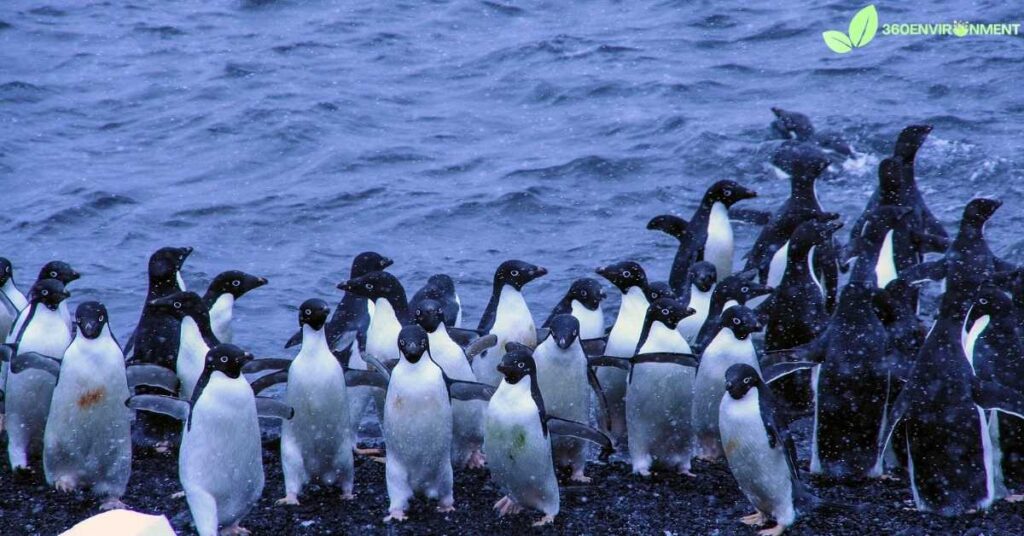
Here is a complete table of all 18 recognized penguin species with their scientific names:
| Penguin Species | Scientific Name |
|---|---|
| Emperor Penguin | Aptenodytes forsteri |
| King Penguin | Aptenodytes patagonicus |
| Adelie Penguin | Pygoscelis adeliae |
| Gentoo Penguin | Pygoscelis papua |
| Chinstrap Penguin | Pygoscelis antarcticus |
| Galápagos Penguin | Spheniscus mendiculus |
| Humboldt Penguin | Spheniscus humboldti |
| Magellanic Penguin | Spheniscus magellanicus |
| African Penguin | Spheniscus demersus |
| Little Penguin (Fairy Penguin) | Eudyptula minor |
| Yellow-eyed Penguin | Megadyptes antipodes |
| Fiordland Penguin | Eudyptes pachyrhynchus |
| Snares Penguin | Eudyptes robustus |
| Erect-crested Penguin | Eudyptes sclateri |
| Macaroni Penguin | Eudyptes chrysolophus |
| Royal Penguin | Eudyptes schlegeli |
| Rockhopper Penguin (Northern) | Eudyptes moseleyi |
| Rockhopper Penguin (Southern) | Eudyptes chrysocome |
This list includes all the recognized species of penguins, grouped by their scientific classification. Let’s delve into details for some of these penguin names and their species.
1.1. Emperor Penguin (Aptenodytes forsteri)
Among penguin names, the Emperor Penguin is perhaps the most famous. Known for its towering height and iconic appearance, the Emperor Penguin is the largest of all penguins, standing up to 1.2 meters (3.9 feet) tall and weighing up to 40 kilograms (88 pounds). This majestic bird is found exclusively in Antarctica, enduring some of the harshest conditions on Earth.
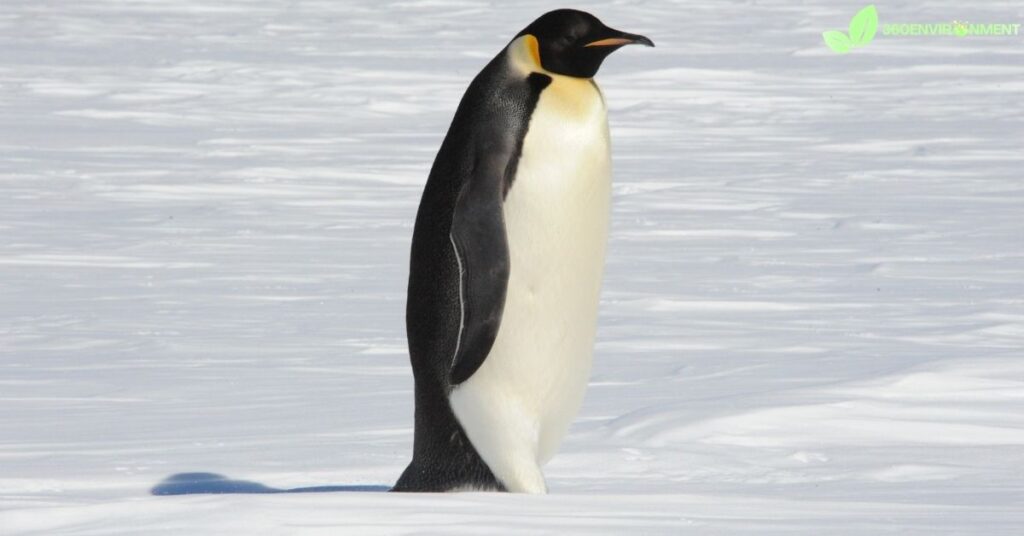
- Habitat: Emperor Penguins breed on the sea ice of Antarctica during the winter months, making them the only penguin species to do so in such extreme cold. Their colonies are located far from the open ocean, requiring long treks for food.
- Ecological Role: As a top predator, Emperor Penguins primarily feed on fish, squid, and krill, helping regulate these marine populations and maintain ecological balance.
1.2. King Penguin (Aptenodytes patagonicus)
Another iconic name among penguins is the King Penguin, the second-largest penguin species. These birds stand about 90 centimeters (35 inches) tall and are found in sub-Antarctic regions rather than on the Antarctic continent.
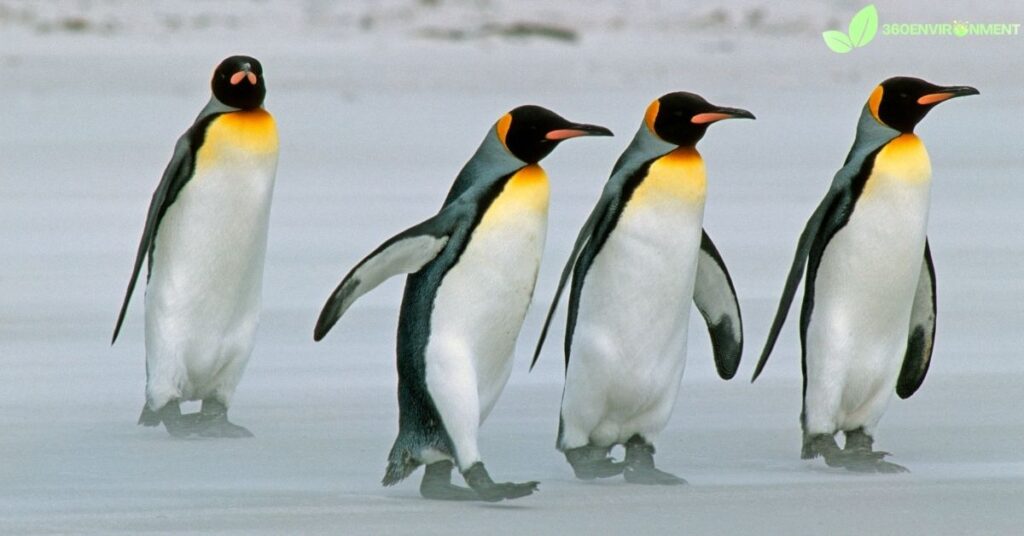
- Habitat: King Penguins breed on sub-Antarctic islands such as South Georgia, the Falkland Islands, and the Indian and Pacific Oceans’ islands. They thrive in areas with easy access to the ocean and steep beaches.
- Ecological Role: King Penguins feed primarily on fish and squid, contributing to the regulation of marine life and ensuring a balanced ecosystem in sub-Antarctic regions.
1.3. Adelie Penguin (Pygoscelis adeliae)
The Adelie Penguin is one of the most widespread species in Antarctica and carries a memorable penguin name. Named after the wife of French explorer Jules Dumont d’Urville, Adelie Penguins are known for their bold behavior and distinctive white eye rings.
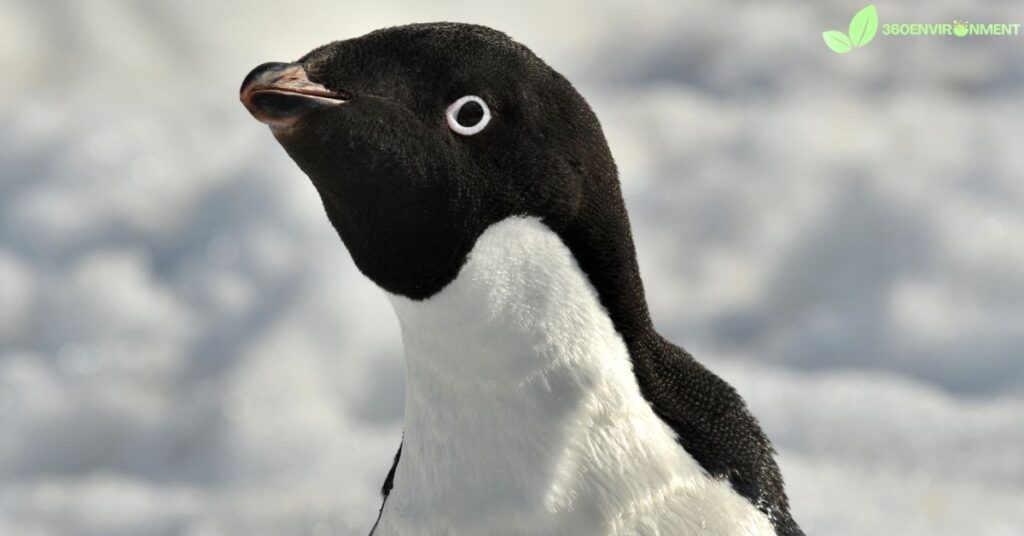
- Habitat: Adelie Penguins nest on rocky shores and islands along the Antarctic coast, forming large colonies during the breeding season.
- Ecological Role: These penguins primarily feed on krill, making them an important part of the Antarctic food web. By regulating krill populations, they help sustain marine species like seals and whales.
1.4. Gentoo Penguin (Pygoscelis papua)
Gentoo Penguins are another species with an easily recognizable name. They stand out with their bright orange beaks and the white stripe across the top of their heads. They are the fastest swimmers among all penguin species.
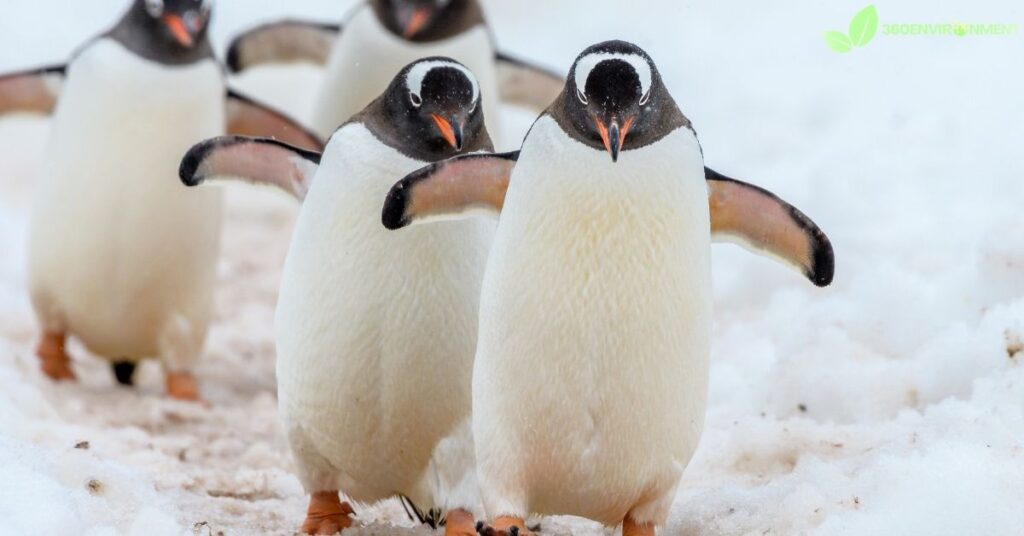
- Habitat: Gentoo Penguins inhabit sub-Antarctic islands and the Antarctic Peninsula, preferring ice-free areas with beaches near rich feeding grounds.
- Ecological Role: Like other penguins, Gentoos feed on krill, fish, and squid. Their predatory role helps maintain marine biodiversity.
1.5. Chinstrap Penguin (Pygoscelis antarcticus)
The Chinstrap Penguin, named after the black band that runs under its chin, is known for its aggressive behavior during the breeding season, defending nests fiercely.
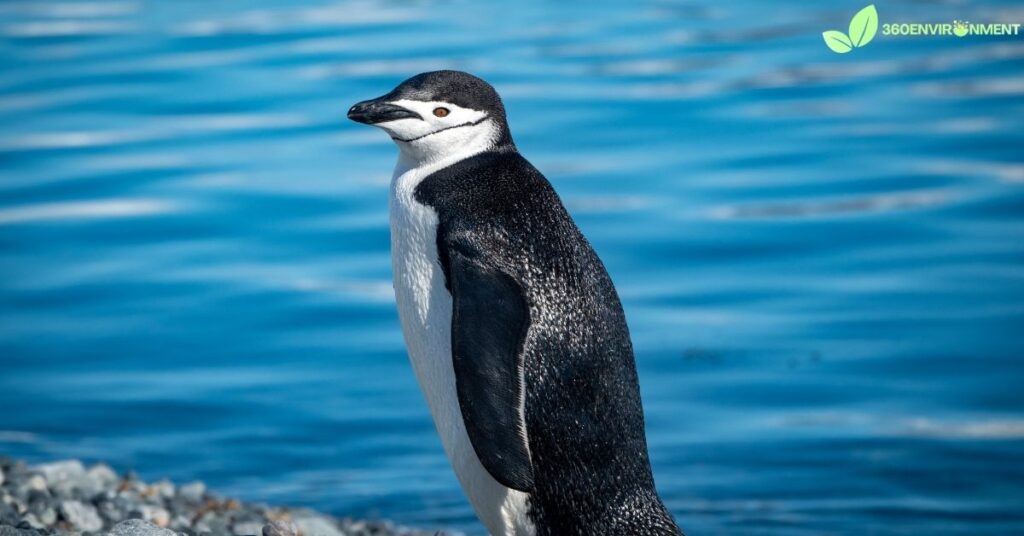
- Habitat: Chinstrap Penguins are found on the Antarctic Peninsula and sub-Antarctic islands, favoring steep, rocky slopes.
- Ecological Role: Chinstraps feed on large amounts of krill, playing a critical role in controlling krill populations and supporting the balance of Antarctic ecosystems.
1.6. Galápagos Penguin (Spheniscus mendiculus)
The Galápagos Penguin is unique among penguin names, being the only species found north of the equator. This small penguin thrives in tropical conditions thanks to the cold waters of the Humboldt and Cromwell Currents.
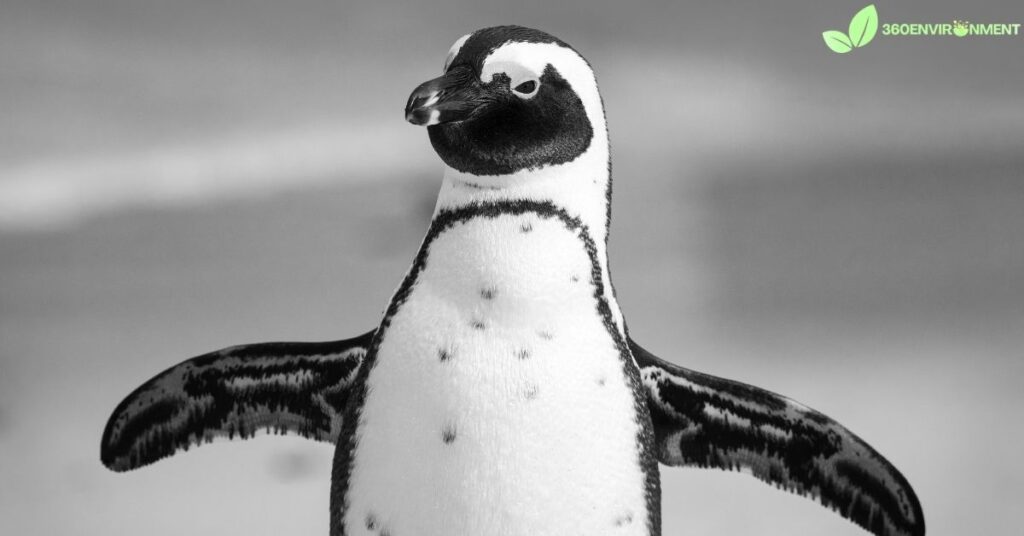
- Habitat: Galápagos Penguins nest in caves and crevices on the rocky shores of the Galápagos Islands to escape the heat.
- Ecological Role: These penguins feed on small fish like sardines and anchovies, regulating fish populations in the region and serving as important indicators of ecosystem health.
2. Penguins’ Environmental Niches and Adaptations
Each penguin species, associated with its unique penguin names, has evolved adaptations that allow it to thrive in different environmental niches. From extreme cold to temperate waters, penguins have developed physiological and behavioral traits that enable them to survive and reproduce.

2.1. Cold Adaptation and Thermoregulation
Penguins are well known for their remarkable ability to withstand freezing temperatures. Some penguin names, like the Emperor Penguin, evoke images of icy landscapes, but all species have evolved to handle various degrees of cold.
- Blubber and Waterproof Feathers: All penguins have a thick layer of blubber for insulation and densely packed feathers to retain body heat. Waterproofing prevents water from penetrating to the skin while swimming in cold waters.
- Huddling Behavior: Emperor Penguins are famous for huddling together in large groups to conserve heat during the brutal Antarctic winter. This behavior allows them to survive in temperatures as low as -60°C (-76°F).
2.2. Feeding Strategies and Diving Abilities
Penguins are exceptional divers, and each species has developed a unique set of skills for catching prey. Names like “Emperor” and “King” evoke the grandeur of these birds, but their feeding strategies are equally impressive.
- Deep Diving: Emperor Penguins are among the deepest diving birds, capable of reaching depths of 500 meters (1,640 feet) to catch fish, squid, and krill.
- Shallow Diving: Smaller species like the Galápagos Penguin tend to dive in shallow waters, where they catch small fish near the surface. Their agility in the water makes them highly effective predators.
2.3. Nesting and Breeding Strategies
Different penguin names evoke distinct nesting and breeding behaviors. Penguins have evolved diverse strategies to ensure the survival of their young in harsh and varied environments.
- Monogamy and Parental Care: Many penguin species are monogamous, with pairs forming long-lasting bonds during the breeding season. Both parents share responsibilities, including egg incubation and chick feeding.
- Colony Breeding: Most penguins, including species like the Emperor and Chinstrap, breed in large colonies. This communal nesting offers protection from predators and facilitates social interaction during the breeding season.
3. The Ecological Role of Penguins in Marine Ecosystems
Penguins play essential roles in maintaining the balance of the ecosystems they inhabit. The impact of penguin names extends beyond their species, as these birds serve as both predators and prey in their respective environments.
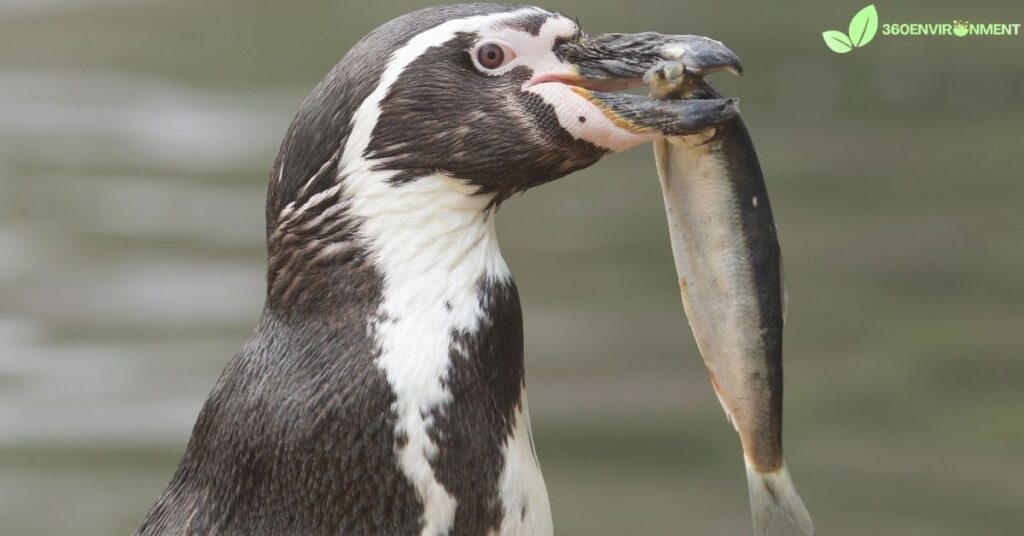
3.1. Penguins as Predators
Penguins, regardless of their species names, are highly effective predators that regulate populations of marine organisms such as fish, squid, and krill.
- Krill Consumption: Species like the Emperor, Adelie, and Chinstrap Penguins feed heavily on krill, helping to control its populations and ensure a balanced marine food web. Krill is also a key food source for other marine animals, including whales and seals.
- Fish and Squid Predation: Other penguins, such as the King and Gentoo, focus on fish and squid. Their predation helps maintain healthy fish populations, preventing overpopulation and ensuring the balance of marine ecosystems.
3.2. Penguins as Prey
While penguins are skilled predators, they are also a critical food source for larger animals in the marine food web. Species such as leopard seals, orcas, and sharks prey on penguins, while birds like skuas and gulls target their eggs and chicks.
- Marine Predators: Penguins, especially their young and eggs, are vulnerable to marine predators like seals and killer whales. These predators play a vital role in controlling penguin populations and ensuring ecosystem stability.
- Terrestrial Predators: On land, penguin eggs and chicks are often preyed upon by birds and introduced species such as rats. Human impact through invasive species has heightened these risks.
3.3. Penguins and Nutrient Cycling
Penguins contribute to nutrient cycling through their feeding and excretion habits. The nutrients in penguin guano help fertilize coastal ecosystems and support plant life.
- Guano Fertilization: Penguin guano enriches the soil and supports the growth of plants on islands where colonies breed. This contributes to ecosystem productivity and helps maintain a healthy balance in these coastal regions.
4. Conservation Challenges Facing Penguins
Despite their ecological importance, many penguin species are facing serious threats. Human activities such as overfishing, climate change, and pollution are putting penguins at risk. Conservation efforts are essential to protect these species and the ecosystems they inhabit.
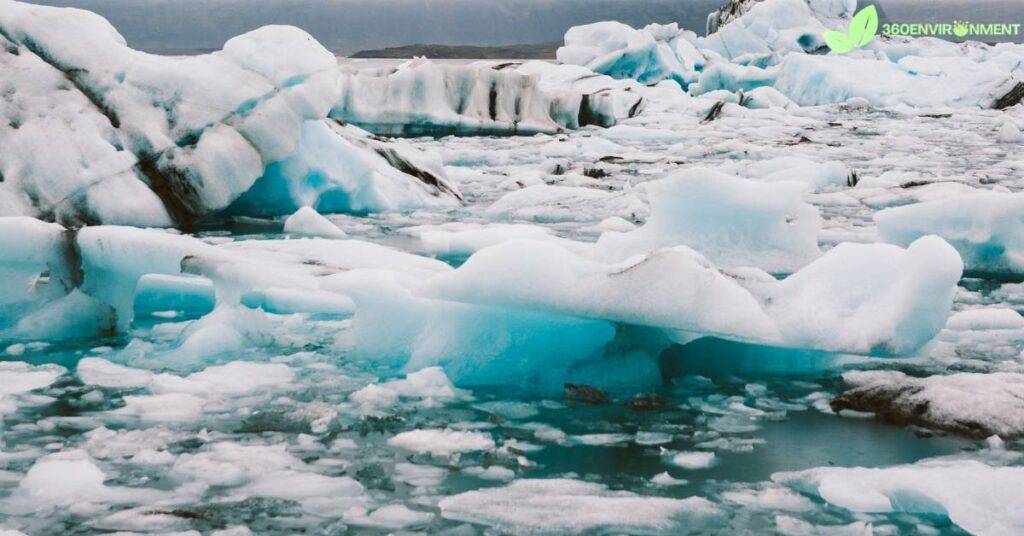
4.1. Climate Change
Rising global temperatures are causing significant changes in the habitats of penguins, particularly in polar regions. Melting sea ice is reducing the breeding and feeding grounds of species like the Emperor and Adelie Penguins.
- Loss of Sea Ice: The disappearance of sea ice is reducing the habitat available for penguins to breed and forage. For species like the Emperor Penguin, which depends on sea ice for nesting, climate change is a direct threat to their survival.
- Ocean Warming: Warmer ocean temperatures are affecting the availability of prey, particularly krill. Penguins that rely on krill as a primary food source are finding it harder to locate food, leading to declines in their populations.
4.2. Overfishing
Overfishing is another major threat to penguins. Commercial fisheries target the same fish and squid species that penguins depend on, leading to competition for food.
- Competition with Fisheries: Penguins are competing with commercial fisheries for key species like krill and fish. Overfishing reduces the availability of these prey species, making it more difficult for penguins to find food, especially during the breeding season when they need to feed their chicks.
4.3. Pollution and Habitat Degradation
Pollution, particularly plastic waste and oil spills, poses significant threats to penguin populations. Penguins can ingest plastic debris, leading to injury or death, while oil spills can damage their waterproof feathers, leaving them vulnerable to cold temperatures.
- Plastic Pollution: Penguins often mistake plastic debris for food, which can lead to fatal blockages or injuries. Plastic waste also contaminates their habitat, disrupting marine ecosystems.
- Oil Spills: Oil spills coat penguins’ feathers, reducing their insulation and buoyancy. Without these protections, penguins are at risk of hypothermia and drowning.
5. Conservation Efforts to Protect Penguins
Conservation efforts are underway to protect penguins and their habitats. International cooperation, marine protected areas, and public awareness campaigns are crucial for the future of penguin populations.
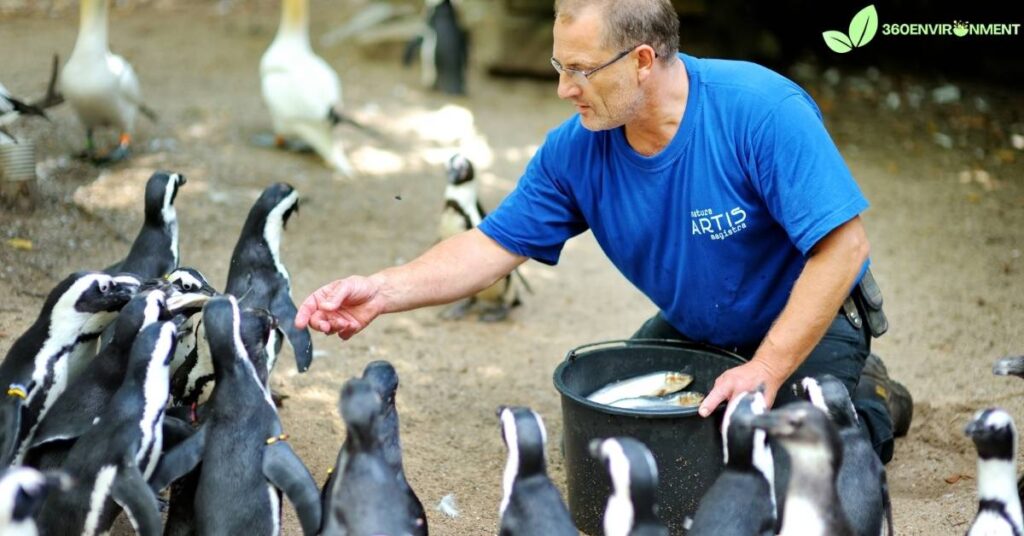
5.1. International Cooperation
Penguin species are protected under various international agreements, including the Antarctic Treaty and the Convention for the Conservation of Antarctic Marine Living Resources (CCAMLR). These agreements regulate human activity in penguin habitats to minimize their impact.
- The Antarctic Treaty: This treaty protects penguin habitats by regulating activities such as tourism and fishing. It ensures that penguins and their environments are safeguarded for future generations.
- Marine Protected Areas (MPAs): MPAs provide safe zones where penguins can breed and feed without interference from human activities. Expanding these areas is essential for protecting penguin populations from the threats of overfishing and pollution.
5.2. Public Awareness and Eco-Tourism
Public awareness campaigns and responsible eco-tourism help raise awareness about the importance of penguins and the threats they face. Eco-tourism can provide funding for conservation projects while ensuring minimal disruption to penguin habitats.
- Citizen Science Programs: Engaging the public in citizen science initiatives helps gather valuable data on penguin populations and behavior, contributing to conservation research.
- Eco-Friendly Tourism: Responsible tourism practices ensure that penguins and their habitats are protected from human disturbance, allowing people to enjoy these incredible animals without causing harm.
Conclusion: The Importance of Penguin Conservation
Penguin names may vary, but their importance in maintaining ecological balance is undeniable. These birds play essential roles in regulating marine populations, contributing to nutrient cycling, and supporting biodiversity. However, human activities threaten their survival, and conservation efforts are necessary to protect them.
By addressing the challenges of climate change, overfishing, and pollution, and promoting conservation initiatives, we can help ensure that penguins continue to thrive in their natural habitats. The survival of penguins is not only crucial for the ecosystems they inhabit but also for the broader health of our planet’s marine environments.
Read More: Freshwater Crabs: A Critical Component of Aquatic Ecosystems

